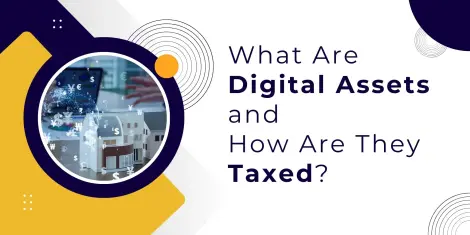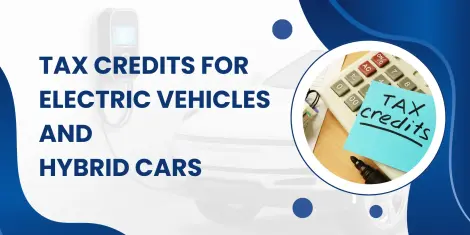Table of Contents
As April 15th draws closer, several taxpayers begin the annual ritual of gathering paperwork and rushing to file at the last minute without reviewing their situation for tax planning opportunities. The process often ends in lower refunds, error-prone filing, and extensions beyond deadlines. Strategic tax planning can optimize your tax position, minimize your liability, and yield substantial savings, potentially thousands of dollars depending on your tax profile. It provides ongoing benefits by revealing ways to structure your income, gain available credits and deductions, and reduce your tax burden. With the recent tax code changes, it is important to reassess your tax situation with fresh eyes and spot strategies that can lower your taxes now and in future years. Here’s all you need to know about year-end tax planning:
Understanding the Key Credits and Deductions
It is important to be aware of what credits and deductions you qualify for before filing your taxes. Credits and deductions help you lower your taxable income and minimize taxes by claiming all eligible benefits. Let's look at the key credits and deductions available for individuals and business owners this year.
Credits for Individuals
Child Tax Credit - It allows eligible taxpayers to reduce their federal income tax by up to $2,000 per qualifying child under age 17. The child must be a US citizen or resident alien, claimed as a dependent on the tax return. However, this credit phases out for higher-income taxpayers, therefore you must be aware of all the eligibility details, filing process, and criterias to avail of this benefit.
Read more about the Child Tax Credit here.
Child and Dependent Care Credit - Taxpayers who pay for qualified child or dependent care while working or studying can claim this credit, which can be between 20 to 35 percent of allowable expenses up to $3,000 for one qualifying individual or $6,000 for two or more. It is helpful for single parents to manage the costs of raising a family. Eligible expenses include costs for babysitters, daycare, preschool, and day camps. This credit is not allowed for married couples filing separately.
Earned Income Tax Credit - This refundable credit benefits low to moderate-income workers and families, particularly those with children. The credit amount is adjusted based on factors like income, marital status, and number of dependents. The EITC supplements wages, encourages work, and helps cover childcare costs for marginal families.
Read more about Earned Income Tax Credit 2023-2024 here.
Education Credits - This credit helps students pursuing higher education to offset their costs through credits like the AOC and the Lifetime Learning Credit. The AOC provides up to $2,500 per eligible student for undergraduate courses. The LLC provides up to $2,000 per tax return for qualified tuition and educated-related expenses for eligible students enrolled in eligible educational institutions pursuing degrees, career training, or job skills improvement.
Energy Efficient Home Improvement Credit - This tax credit is available through 2032 for homeowners who complete certain qualified energy-saving improvements on their primary residence. Starting in January 2023, the credit covers 30% of costs for eligible projects like installing insulation, energy-efficient doors and windows, water heaters, furnaces, and more, up to an annual limit of $1,200. This enhanced credit replaces the previous lifetime limit and incentivizes homeowners to upgrade homes to be more energy efficient.
Residential Clean Energy Credit - Homeowners who install renewable energy systems like solar panels, solar water heaters, small wind turbines, fuel cells, and geothermal heat pumps in their primary residence can receive this tax credit through 2034. The maximum credit has been increased to 30% of system costs for systems placed in service from 2022 through 2032, after which it phases down to 26% for 2033 and 22% for 2034. Battery storage technology also became eligible starting in 2023, making it more affordable for homeowners to power their homes with renewable energy.
New Energy Efficient Home Credit - Builders of new, highly energy-efficient homes can claim a tax credit ranging from $500 to $5,000 depending on the home's efficiency, as certified by a qualified organization. It promotes the construction of new homes with advanced energy efficiency. The credit applies to homes completed between 2023 and 2032 that achieve required energy savings of at least 50% relative to the 2006 International Energy Conservation Code.
Clean Vehicle Credits - Purchasers of new qualifying electric, plug-in hybrid electric, hydrogen fuel cell, and alternative fuel vehicles are eligible for income tax credits up to $7,500 depending on the vehicle's battery capacity and other eligible factors. Used EVs, PHEVs, and FCVs also qualify but at lower credit amounts. A credit up to $4,000 or 30% of the sale price is available through 2032 for previously owned qualifying electric, plug-in hybrid, and hydrogen fuel cell vehicles purchased within certain income limits, while the maximum qualifying sale price is $25,000.
Credits for Businesses
Research Credit - This credit enables business owners to claim a tax credit on qualified research spending that leads to new or improved products, manufacturing processes, technologies, and software. activities like designing prototypes, conducting experimental tests, developing new software, and paying for research supplies are eligible.
Work Opportunity Tax Credit - The WOTC helps companies that hire employees from certain target groups like veterans, ex-felons, those on public assistance, long-term unemployment, and residents of economically distressed areas. The credits are determined per employee depending on the target group and hours worked in the first year.
Disabled Access Credit - This credit helps small businesses cover a percentage of eligible expenses incurred to improve accessibility for disabled persons such as removing architectural or communication barriers. Qualified expenses include sign language interpreters, adaptive equipment, accessible parking spaces, ramps, accessible bathrooms, walkways, and more.
Employer Credit for Paid Family Leave - The ECFPL provides businesses with up to 25% tax credit on wages paid to employees out on FMLA leave for reasons like birth of a child, adoption, foster placement of a child, or serious family health issues. It encourages employers to offer paid family leave to retain talent.
Deductions for Individuals
Standard Deduction - It allows taxpayers to lower taxable income by a fixed amount each year ($13,850 for single filers, $27,700 for married filing jointly & $20,800 for Head of Household in 2023 ) without needing to itemize deductions. The standard deduction provides substantial savings compared to itemizing. It lowers taxable income without the need to track individual deductible expenses throughout the year.
Itemized Deductions
You can choose to itemize deductions on your tax return if your total deductions exceed the standard deduction amount of your filing status. It reduces your taxable income and lowers your overall liability. These deductions include:
Mortgage Interest Deduction - Taxpayers who take out a mortgage to buy, build, or improve a primary or secondary home can deduct the interest paid on up to $750,000 of the loan value. The total mortgage must be under $1 million for Home Acquisition Debt(Before December 16, 2017) and the deduction applies only to the first and second home. Interest paid on home equity loans and lines of credit can also qualify, subject to limits.
Read more about Mortgage Interest Tax Deduction here.
State and Local Tax Deduction - Taxpayers can take this itemized deduction for state and local property taxes paid plus income or sales tax. There is a $10,000 cap on the SALT deduction, but married taxpayers filing separately get $5000 each. The deduction allows taxpayers to avoid double taxation on income at both state and federal levels.
Medical Expenses Deduction - This deduction allows taxpayers to deduct qualified medical and dental expenses exceeding 7.5% of adjusted gross income, providing the taxpayer itemizes deductions. Eligible expenses include health insurance premiums, doctor visits, hospital care, lab tests, prescription drugs, medical equipment, and more. This write-off provides financial relief for individuals with substantial healthcare costs.
Read more about Medical Expenses Deduction here.
Charitable Donations - Taxpayers who make monetary or property donations to qualified IRS-approved public charities may claim an itemized deduction for those gifts on their tax return, lowering their taxable income. For cash donations, the deduction is limited to 60% of the taxpayer's adjusted gross income (AGI) for the year. For appreciated non-cash assets like stock or real estate owned for over one year, the deduction is limited to 30% of AGI. There is a 5-year carryforward for any excess. For used goods, the deduction is limited to the fair market value on the date of contribution. New rules require taxpayers to obtain qualified appraisals for donations of non-cash assets valued at over $5,000 and to complete Section A of Form 8283.
Casualty Loss Deduction - Taxpayers who experience unreimbursed property damage or loss due to a sudden event like a natural disaster, car accident, theft, or vandalism can claim an itemized deduction for those losses, subject to restrictions. There are calculation rules, AGI limits, and Form 4684 required to benefit from this deduction.
Deductions for Businesses
Equipment Purchases - Under Section 179 expensing rules, businesses can fully deduct up to $1.16 million in new or used equipment in the first year of purchase. This allows writing off the entire equipment cost rather than slowly depreciating it over time. Section 179 covers computers, software, vehicles, machinery, furniture, and more.
Startup Expenses - Rather than deducting all initial startup costs in the first year, small businesses can amortize these expenses over 15 years under IRC 195. Up to $5,000 in startup costs can be deducted in the first year, then the $5,000 deduction limit phases out dollar-for-dollar for excess expenses up to a total of $50,000 in costs including things like market research, insurance, rent, advertising, and training.
R&D Costs - Businesses can deduct research and development expenditures in the year incurred under IRC 174, rather than capitalizing the costs. This includes wages for researchers, cost of supplies, testing, and payments to others for R&D work on new products and processes. Software development costs may also qualify for this deduction.
Employee Benefits - Employers can deduct the cost of providing various fringe benefits to employees like health insurance premiums, retirement plan contributions, tuition reimbursement, adoption assistance, transit passes, and more. However, certain limits and non-discrimination rules apply. You must check the IRS website for more details.
Qualified Business Income Deduction - The QBI deduction allows eligible taxpayers to deduct up to 20% of qualified business income from pass-through entities like S-corps, LLCs, partnerships, and sole proprietorships. The deduction aims to put pass-through businesses on par with C-corps receiving lower corporate tax rates. However, there are limitations based on W-2 wages paid and capital investment for higher-income filers.
Read more about Qualified Business Income Deduction here.
Best Practices for Year-end Tax planning
Best practices can help you organize your finances, claim rightful deductions, avoid errors, reduce audit risk, and lower your tax outgo by making the most of available tax saving opportunities .Here are some key factors to keep in mind while reviewing your tax planning:
Calculate Your Taxable Income - Accurately tally all taxable income sources document everything in an organized manner to streamline your tax filing.
Be thorough to avoid and check your prior year returns and actively gather income statements. Calculate adjusted gross income by deducting above-the-line deductions.
Ensure Accurate Accounting – Maintain accurate records and receipts throughout the year for all deductible expenses. These can include charitable gifts, business miles driven, home office use, and other potential write-offs. Stay organized with accounting software or spreadsheets to track revenues, expenses, assets, and liabilities using standard accounting methods and maintain clean books for maximized returns.
Check our small business accounting best practices Ebook for insightful tips here.
Mind the Deadlines – Note key dates such as the deadline for IRA contributions (tax year or April filing deadline, whichever is earlier), claiming refunds (3 years from filing date), and filing extensions. File Form 4868 by April tax day if more time is needed, but payments are still due then. Avoid overlooking deadlines that could jeopardize deductions.
Reduce Future Tax Exposure – Lower your future taxes by funding tax-advantaged retirement accounts like 401(k) and IRAs. For 2023, the total combined contributions made to all of an individual's traditional and Roth IRAs cannot exceed $6,500 (or $7,500 for those age 50 or older making catch-up contributions) or the individual's earned taxable compensation for the year if that amount is less than the IRA dollar limit.
Learn more about maximizing IRA deductions here.
Selecting the Best Tax Preparer for Tax Filing and Other Services
Choosing the right tax preparation firm can make tax filing less stressful and help maximize your refund. A professional firm offers comprehensive tax services while uncovering all eligible credits and deductions to minimize your tax burden. Here are four tips to help you select the best tax partner:
Expertise - Choose a firm with experience CPAs and EAs that specialize in taxes and keep up with the frequent tax code changes. Look for expertise handling personal and business taxes, audits, amended returns, and IRS disputes.
Convenience - Seek a firm that offers easy filing through secure online portals, seamless document upload, and e-signature options. Choose a responsive team you can reach year-round.
Personalized Services - Opt for a full-service firm that provides proactive planning and advisory all year, not just tax season filing. Look for tailored guidance aligned to your financial goals.
Affordable Fees- Compare service fees and assess the full value being provided, not just the base return price. Avoid firms tied to refund size or opaque hourly rates without caps.
Learn more about how to find the best tax preparer here
To Sum it up
Year-end tax planning is a crucial aspect of your financial management that demands careful consideration of credits, deductions, and best practices. While navigating this complex landscape may seem challenging, consulting expert tax professionals can ease this process.
NSKT Global offers professional tax services and customized Tax planning strategies based on your personal and business needs. Our team stays updated on the latest tax reforms to maximize your credits and deductions, providing proactive planning and filing support so you can leverage savings opportunities and face audits with confidence. With our year-round assistance handling taxes, accounting, and financial planning, you can look forward to maximizing your refunds and navigate the tax season with ease.
The information provided here is for general informational purposes only and should not be construed as professional advice. The tax-related content on this blog is based on our understanding of tax laws as of the date of publication and may be subject to change.







